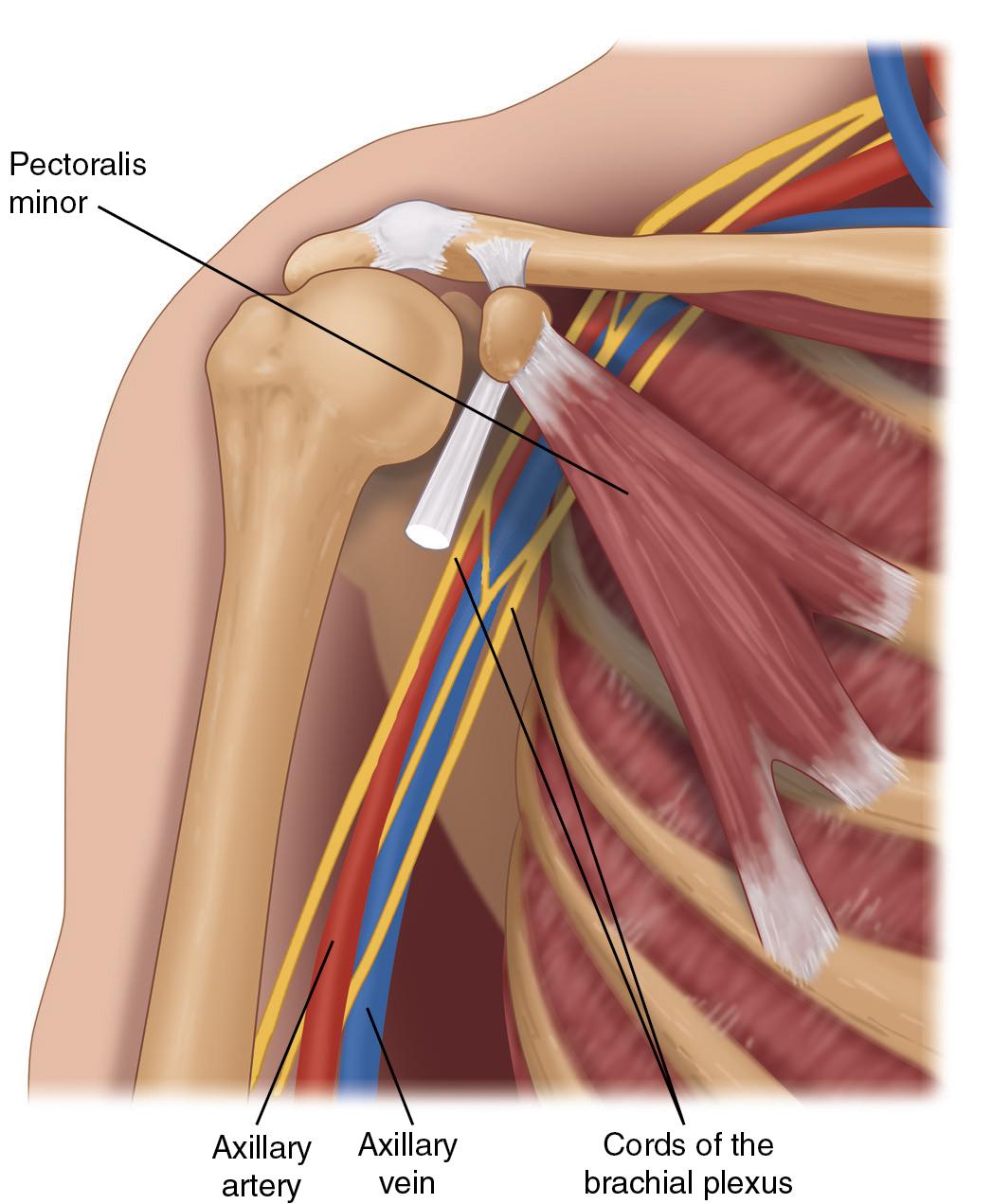Physical Address
304 North Cardinal St.
Dorchester Center, MA 02124
Pectoralis minor syndrome results from pathologic tightness or hyperactivity of the pectoralis minor that can produce periscapular and neurogenic symptoms. Non-responders to physical therapy can be treated successfully with arthroscopic pectoralis minor tenotomy
A history of overhead sports or prior surgical intervention
A constellation of anterior shoulder pain, nonspecific neurological symptoms, and tenderness along the pectoralis minor insertion
Positive response to ultrasound-guided pectoralis minor block
Neurogenic pectoralis minor syndrome is a diagnosis of exclusion and other causes of symptoms such as thoracic outlet syndrome and cervical radiculopathy must be ruled out
Place shoulder in 30–45 degrees of forward elevation to relax anterior head of deltoid, permitting it to “lift off” of anterior surface of coracoid to facilitate visualization
May use a 70-degree arthroscope to visualize anterior coracoid surface from a direct lateral subacromial portal
Establish colinear, medial peri-coracoid portal for safe tenotomy of the pectoralis minor insertion
Avoid origin of conjoined tendon at tip of coracoid
Release immediately adjacent to medial border of coracoid to limit risk to brachial plexus and axillary vessels
: Arthroscopic pectoralis minor tenotomy.
: Arthroscopic evaluation of anomalous pectoralis minor insertion.
Increasingly, investigators recognize the pectoralis minor as a significant contributor to a variety of pathologic processes in the shoulder girdle, including neurovascular compression, scapulothoracic abnormal motion (STAM), subacromial impingement syndrome, failed treatment of neurogenic thoracic outlet syndrome, and nonspecific anterior shoulder pain. In particular, overhead athletes can suffer from dynamic, pathologic contraction or hyperactivity of the pectoralis minor, although this can also be seen in a variety of other patient categories, including a previously operated shoulder. , Symptoms cluster into one of two broad categories: those related to STAM and those related to neurogenic compression along the lateral extent of the brachial plexus, although combinations occur frequently.
The pectoralis minor originates from the 3rd through 5th ribs along the anterolateral chest wall and inserts along the medial, distal aspect of the coracoid process, with a tendon averaging 2.3 cm in width. A variety of anatomic variants can be present. The line of pull exerted by the pectoralis minor on the coracoid can produce anterior tilt, internal rotation, and lateral translation of the medial border of the scapula, generating STAM and a variety of resultant periscapular and impingement–related symptoms. ,
With respect to neurogenic compression, three commonly recognized and distinct anatomic spaces exist between the cervical spine and the shoulder ( Fig. 40.1 ). From medial to lateral, these include the scalene triangle, the costoclavicular space, and the pectoralis minor space. Coexistence of neurovascular compression in both the scalene triangle and costoclavicular space—collectively termed “thoracic outlet”—and the pectoralis minor space is not uncommon, potentially obfuscating diagnosis of compression within the latter. , The pectoralis minor space is that extending primarily from the midportion of the pectoralis minor to the tip of the coracoid and is occupied by the axillary artery, axillary vein, and lateral, posterior, and medial cords of the brachial plexus.

Most cases of pathology attributed to the pectoralis minor can be treated successfully with a structured rehabilitation program focused on pectoralis minor stretching and strengthening of antagonist muscles such as the lower trapezius and correction of associated biomechanical deficiencies. , , However, refractory cases can benefit from operative treatment in the form of coracoid-based pectoralis minor tenotomy. Although this procedure can be performed successfully via both open and arthroscopic techniques, this chapter focuses upon the arthroscopic approach. ,
Overhead sport such as baseball, tennis, and volleyball
Prior shoulder surgery
Become a Clinical Tree membership for Full access and enjoy Unlimited articles
If you are a member. Log in here